Yurt-Coordinator Performance Test
Background
Yurt-Coordinator is an important component in edge node pool. OpenYurt uses Yurt-Coordinator to select a yurthub master and backup the resources in edge node pool.
In this article, we test the performance of Yurt-Coordinator pod and give a suggestion resource configuration.
Test Environment
Kubernetes Version
Major:"1", Minor:"22", GitVersion:"v1.22.0", GitCommit:"c2b5237ccd9c0f1d600d3072634ca66cefdf272f", GitTreeState:"clean", BuildDate:"2021-08-04T17:57:25Z", GoVersion:"go1.16.6", Compiler:"gc", Platform:"linux/amd64"
Node Configuration
Master and work node are virtual machines run on VMWare Fusion.
Operating System
| Master | Node | |
|---|---|---|
| LSB Version | :core-4.1-amd64:core-4.1-noarch | :core-4.1-amd64:core-4.1-noarch |
| Distributor ID | CentOS | CentOS |
| Description | CentOS Linux release 8.4.2105 | CentOS Linux release 8.4.2105 |
| Release | 8.4.2105 | 8.4.2105 |
CPU
| Master | Node | |
|---|---|---|
| Architecture | x86_64 | x86_64 |
| CPU op-mode (s) | 32-bit, 64-bit | 32-bit, 64-bit |
| Byte Order | Little Endian | Little Endian |
| CPU (s) | 4 | 4 |
| On-line CPU(s) list | 0-3 | 0-3 |
| Thread(s) per core | 1 | 1 |
| Core(s) per socket | 1 | 1 |
| Socket(s) | 4 | 4 |
| NUMA node(s) | 1 | 1 |
| Vendor ID | GenuineIntel | GenuineIntel |
| CPU family | 6 | 6 |
| Model | 158 | 158 |
| Model name | Intel(R) Core(TM) i7-9750H CPU @ 2.60GHz | Intel(R) Core(TM) i7-9750H CPU @ 2.60GHz |
| Stepping | 10 | 10 |
| CPU MHz | 2592.000 | 2592.000 |
Memory
| Master | Node | |
|---|---|---|
| Total memory | 7829472 K | 7829472 K |
Disk
| Master | Node | |
|---|---|---|
| Total Size | 20GiB | 20GiB |
Test Method
- Start the Yurt-Coordinator pod and record the beginning resource used.
- Write a mount of resources and record the resource used of Yurt-Coordinator. In this test, we write 1000 pods and 500 nodes into Yurt-Coordinator. The size of each pod and node both are 8KB.
- Delete all resources in Yurt-Coordinator. To see whether resource used will go down to the beginning level.
- Rewrite a mount of resources to Yurt-Coordinator and patch them frequently and randomly. Check the resource used of current situation.
- Check the result of leader election.
Test Result
Phase one
Start Yurt-Coordinator pod and record the beginning resource used.
- CPU used: 70m ~ 90m
- mem used: 370MB.
- apiserver used 205MB.
- etcd used 165MB.
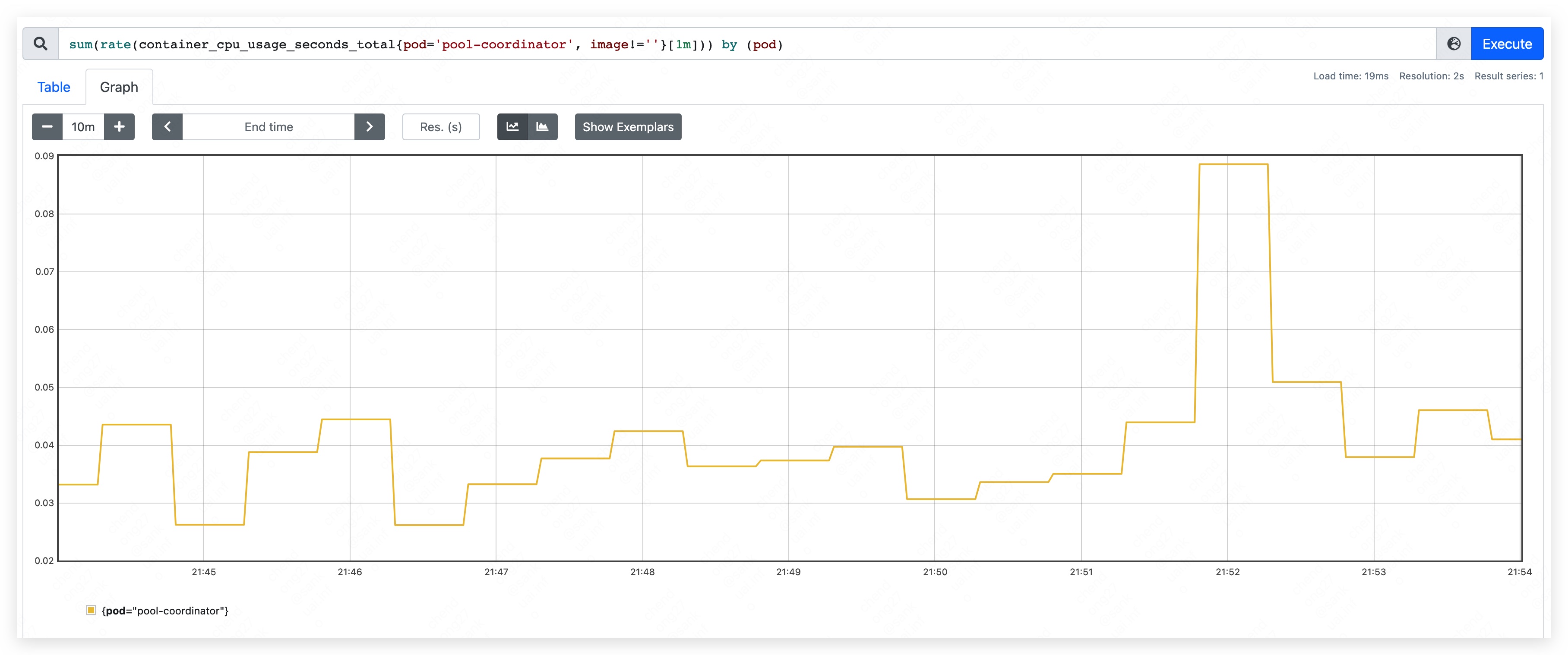
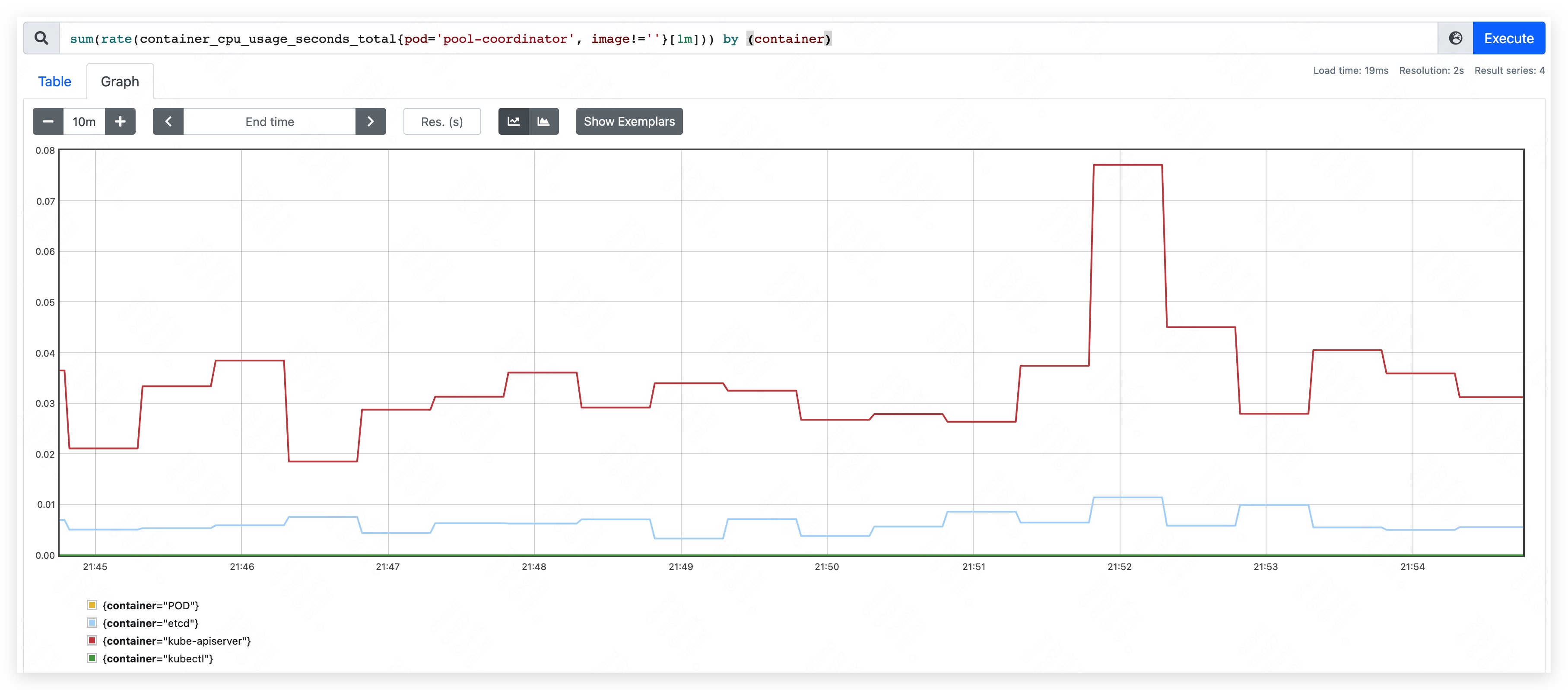
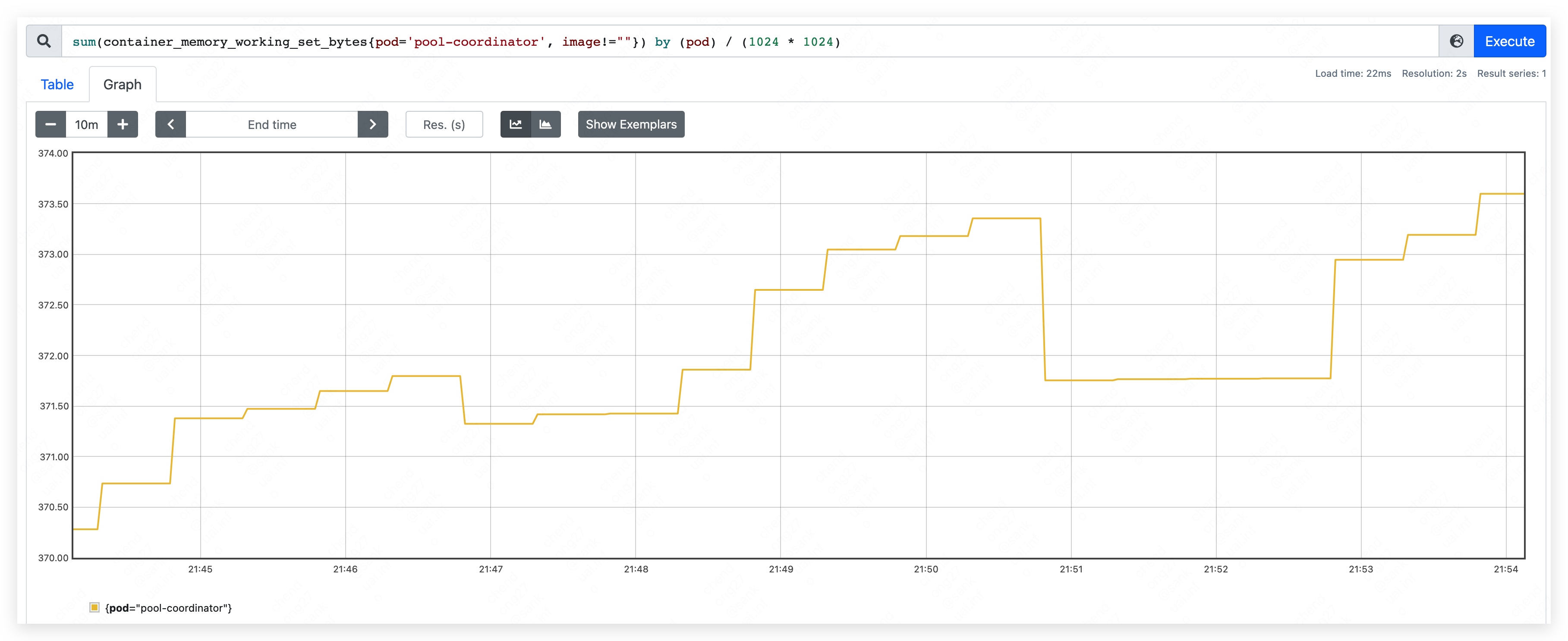
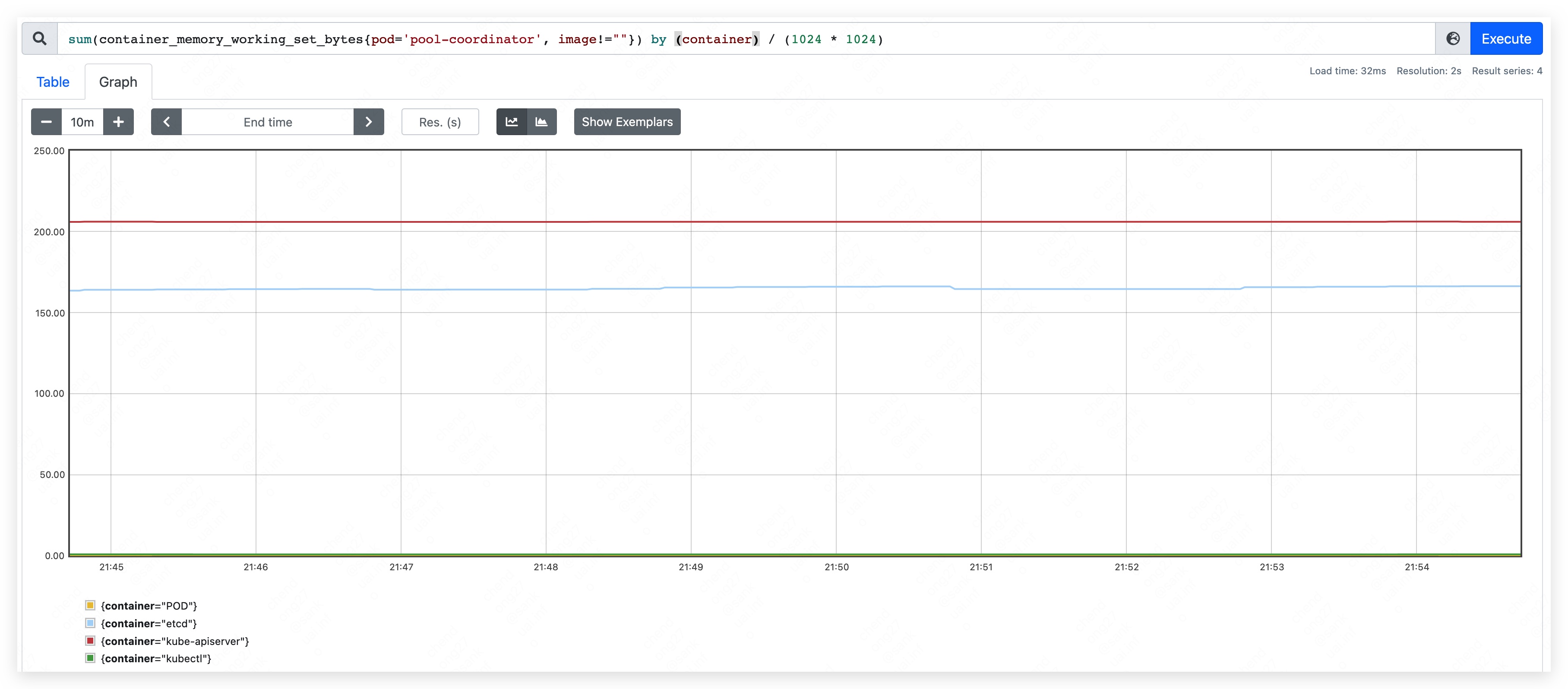
Phase two
Write a mount of resources and record the resource used of Yurt-Coordinator. In this test, we write 1000 pods and 500 nodes into Yurt-Coordinator. The size of each pod and node both are 8KB.
- top CPU used: 310m
- top mem used: 450MB.
- apiserver used 240MB.
- etcd used 210MB.
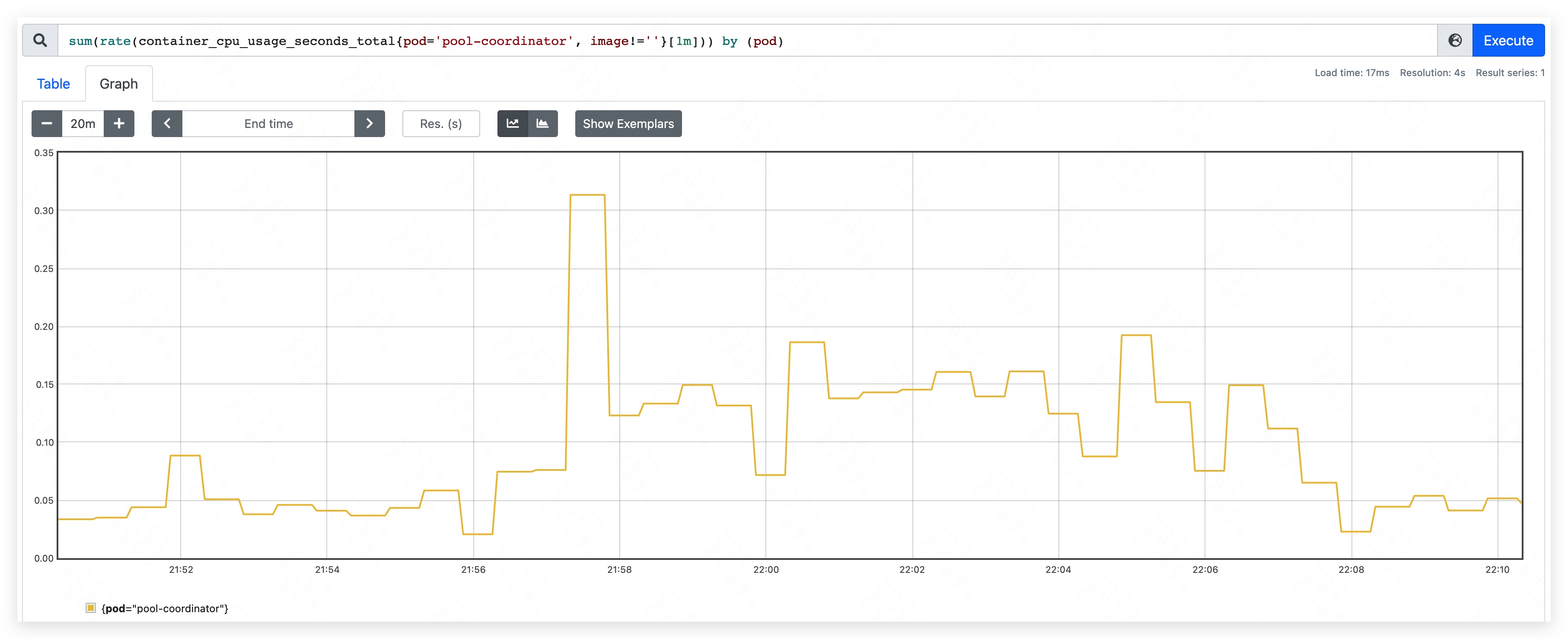
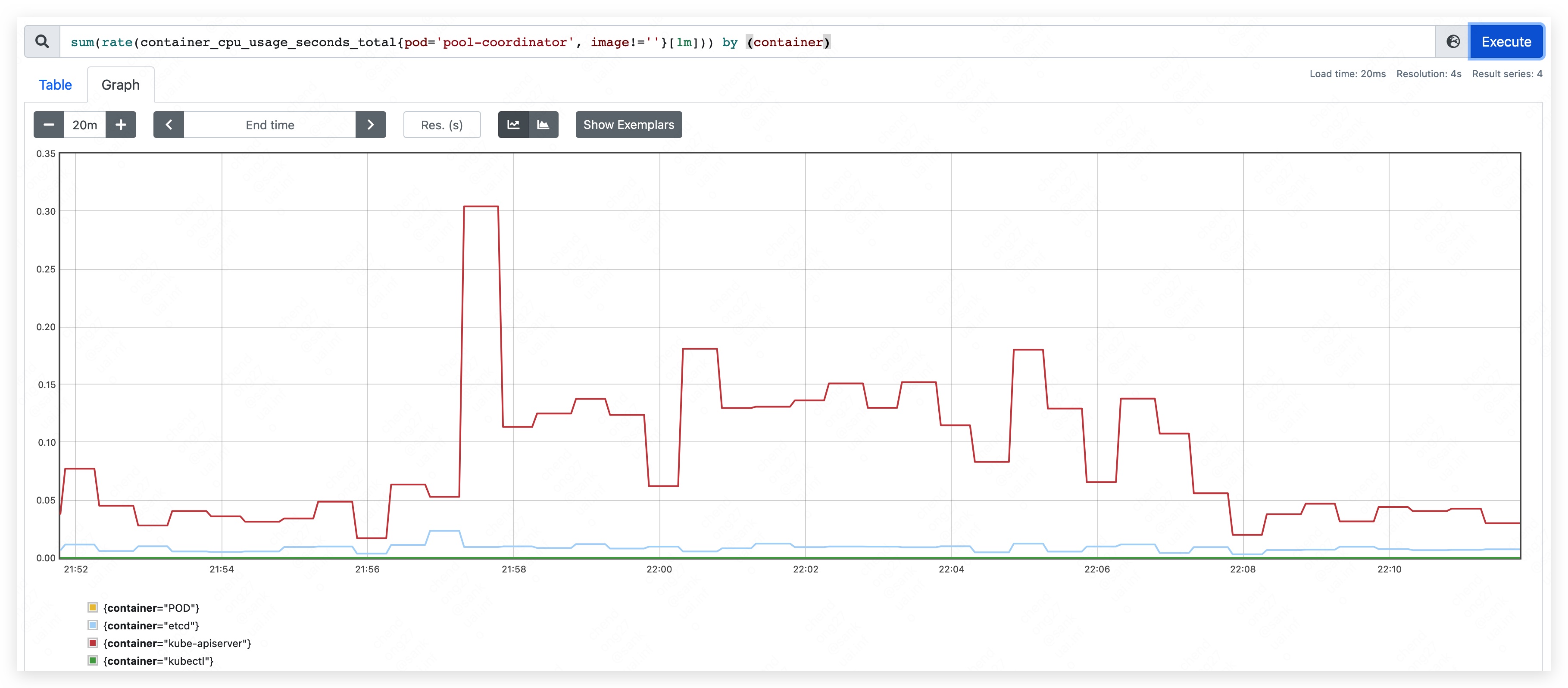
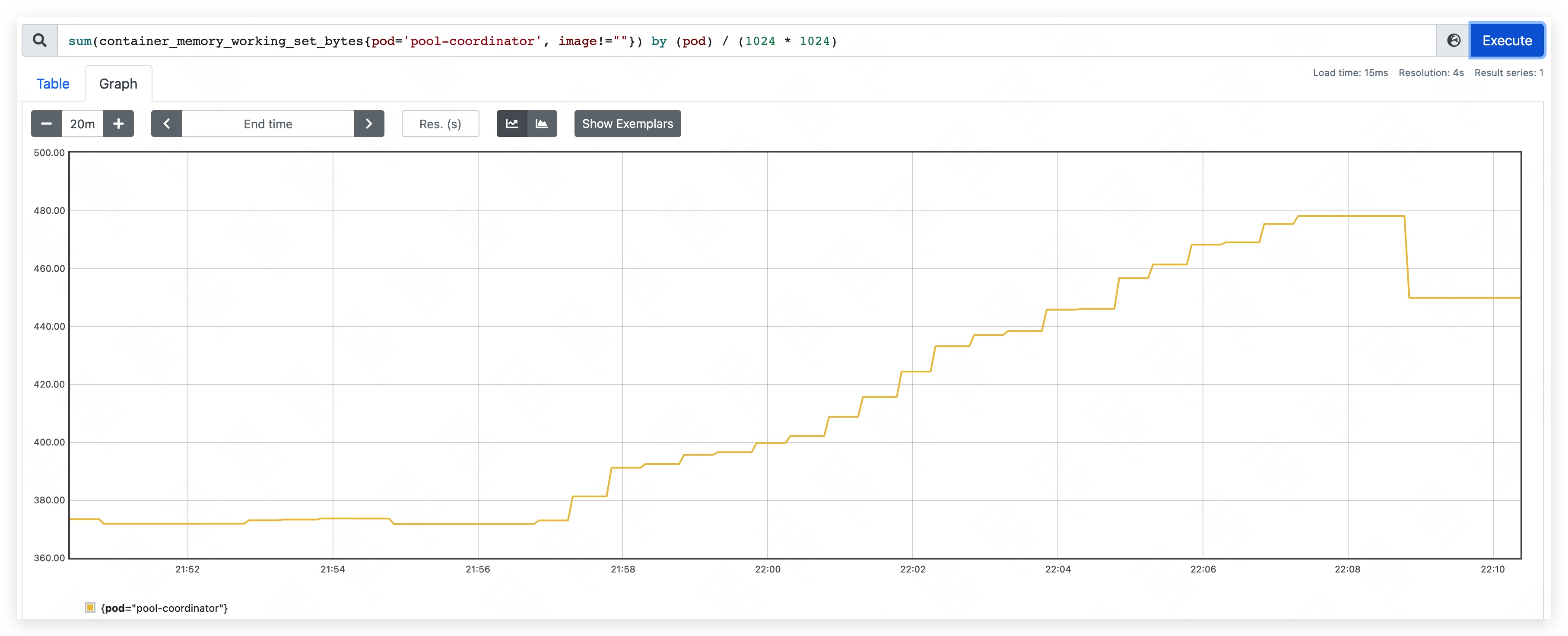
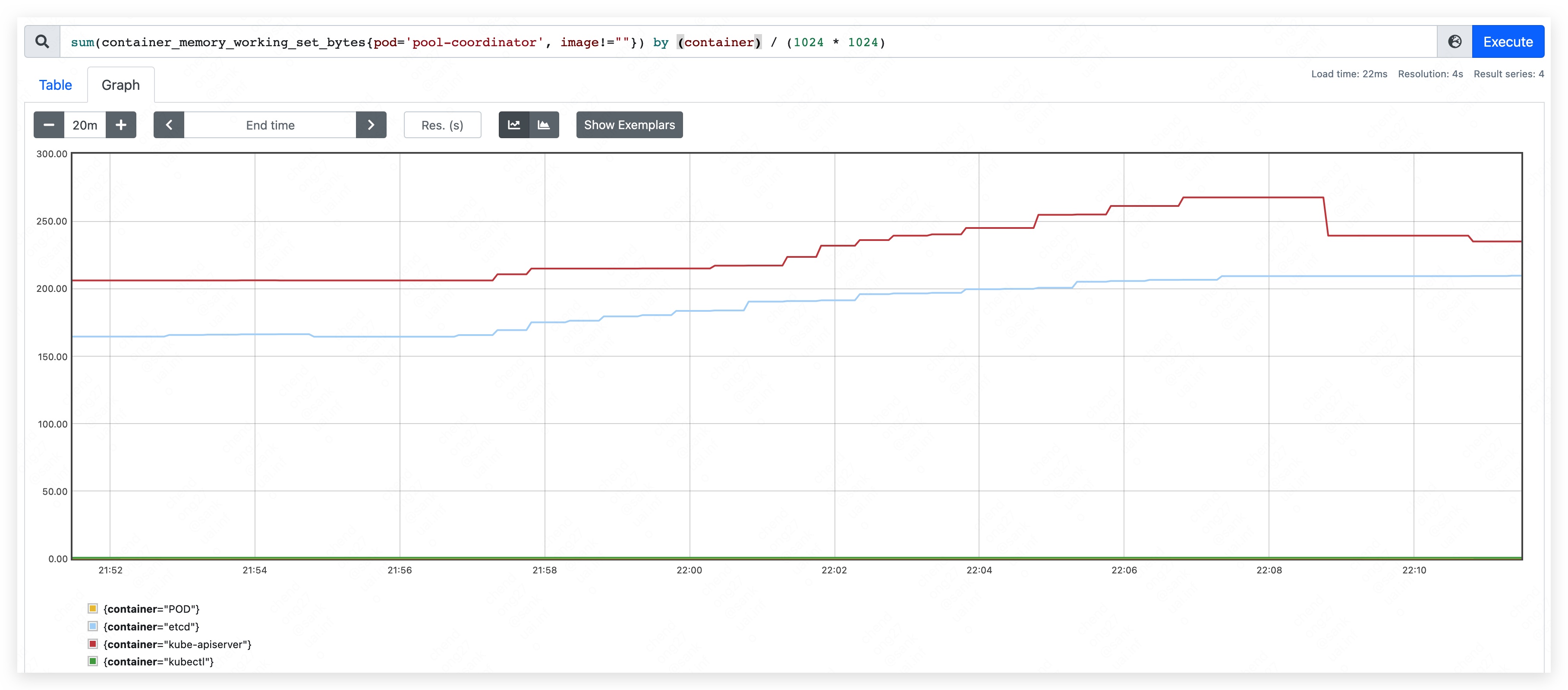
Phase three
Delete all resources in Yurt-Coordinator. To see whether resource used will go down to the beginning level.
- top CPU used: 260m
- top mem used: 590MB.
- apiserver used 350MB.
- etcd used 240MB.
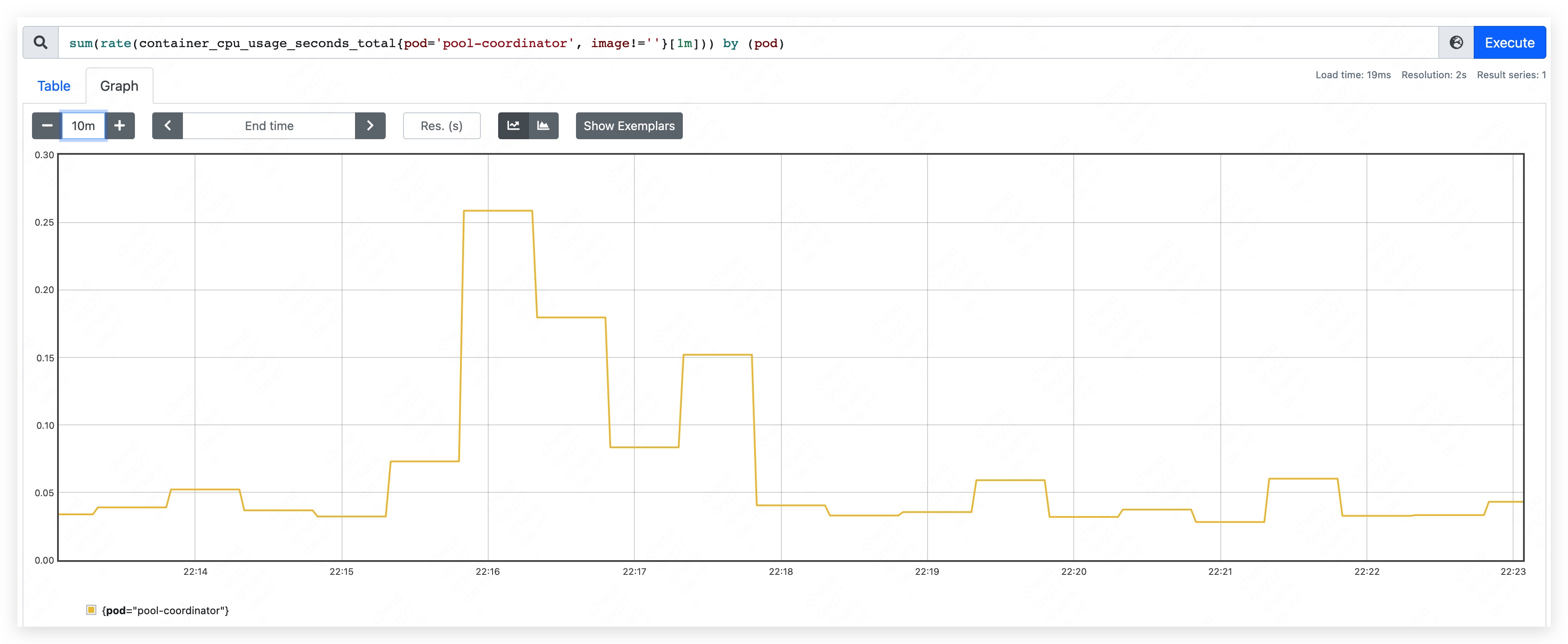

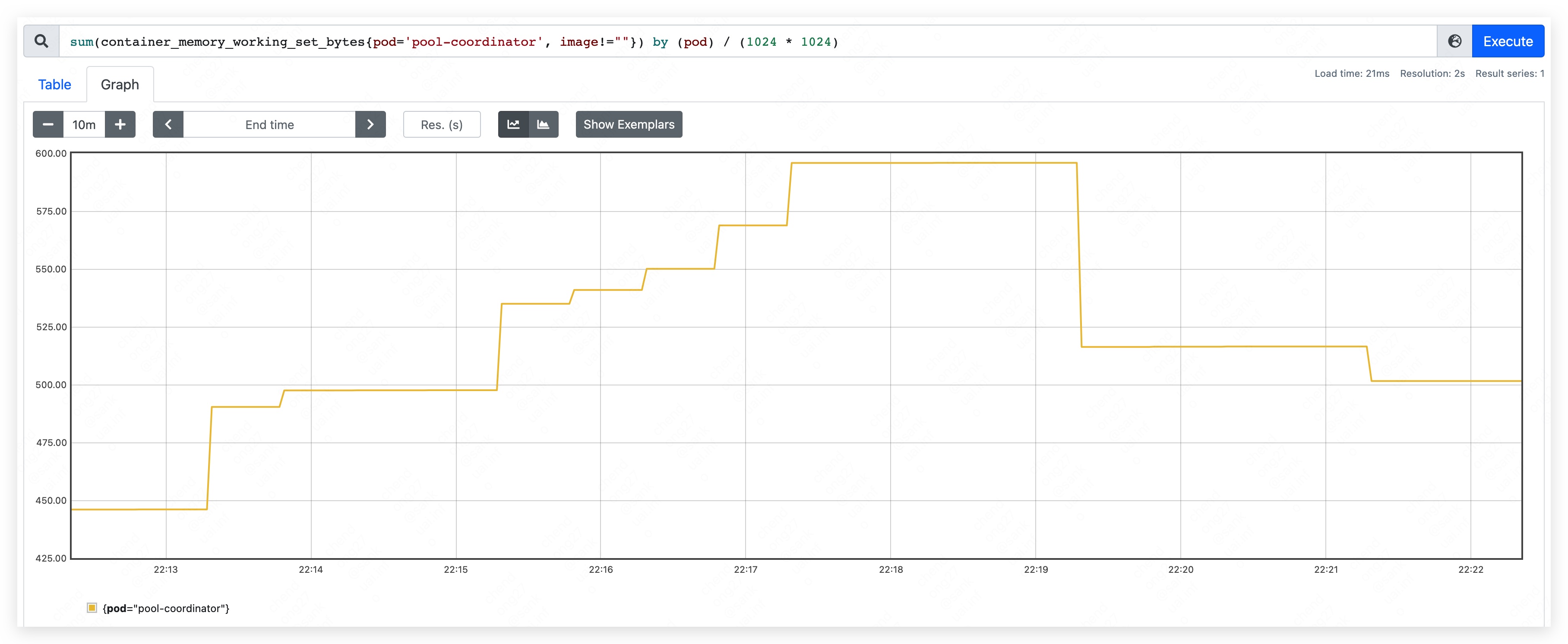
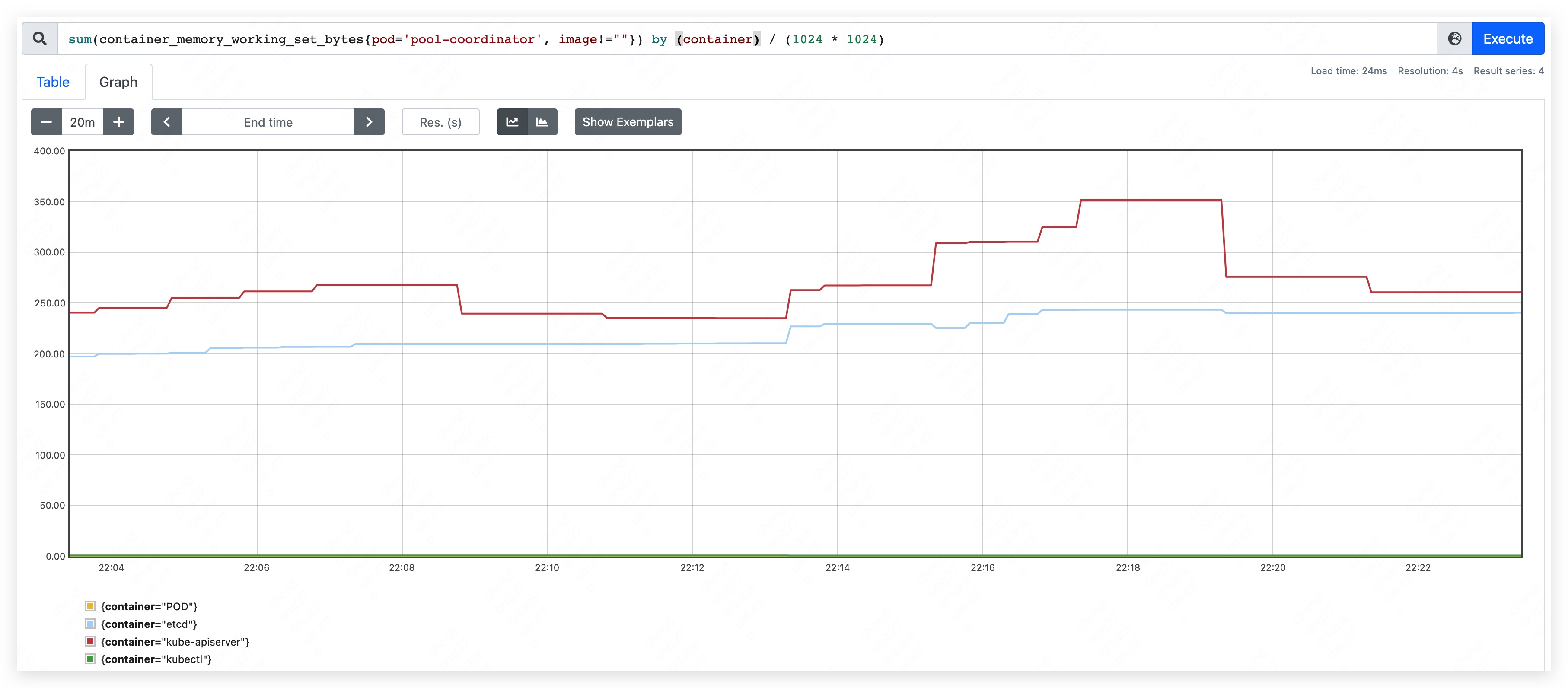
Phase four
Rewrite a mount of resources to Yurt-Coordinator and patch them frequently and randomly. Check the resource used of current situation.
- top CPU used: 640m.
- mem used rise continually and result in etcd container OOM.
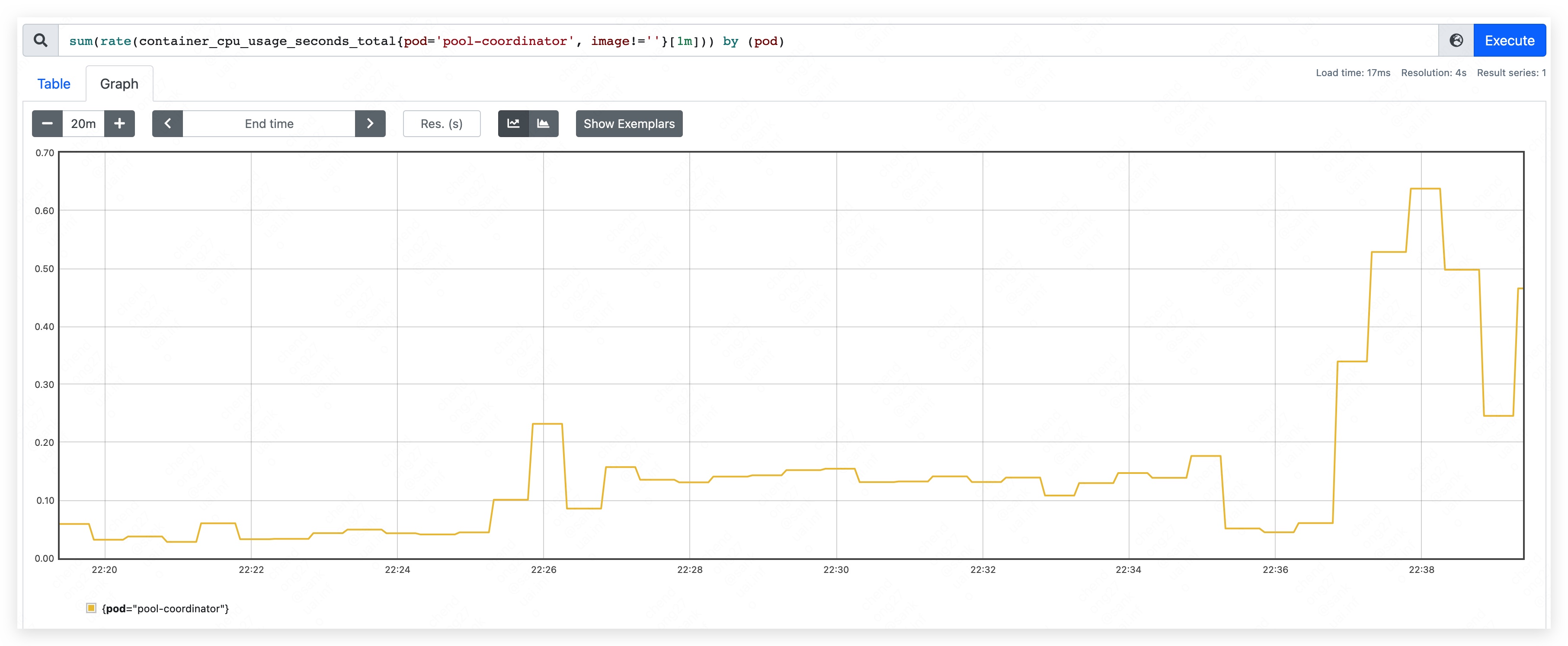
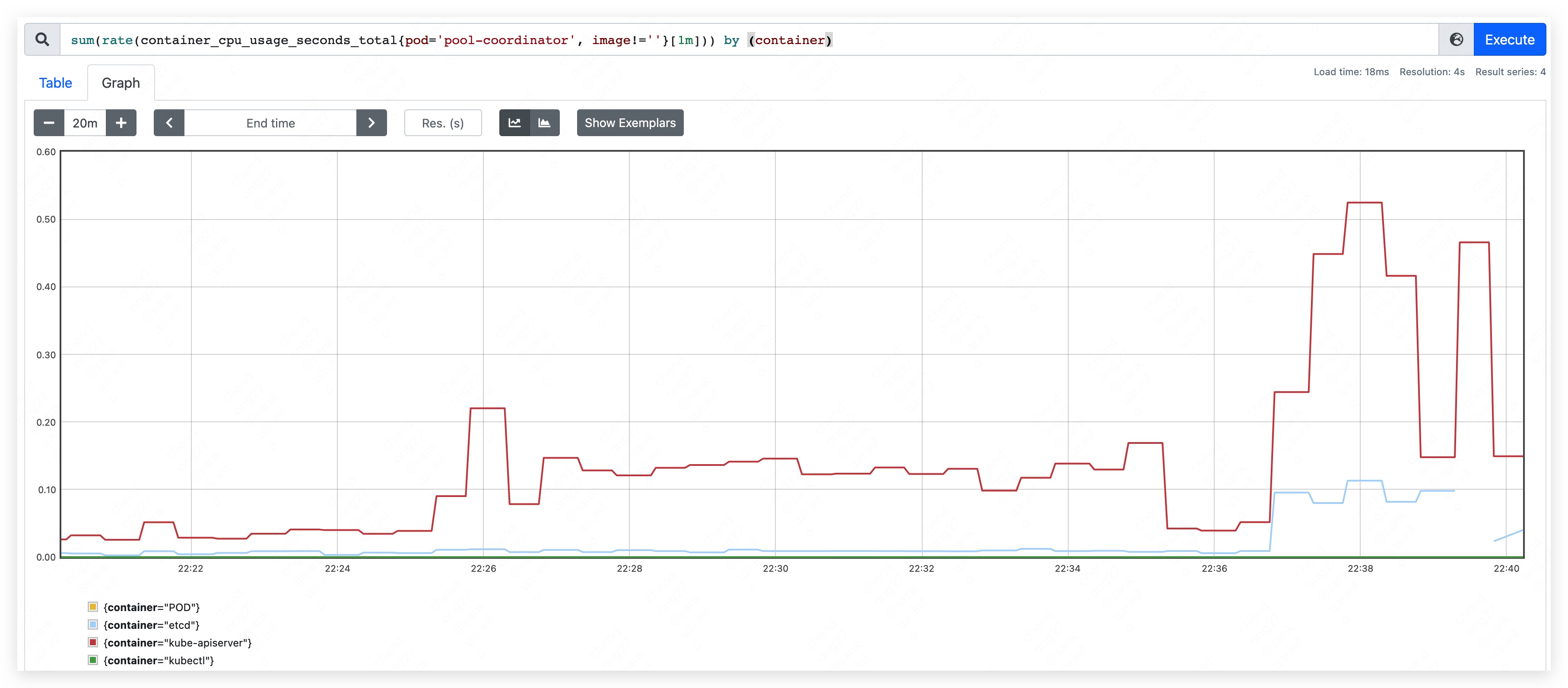
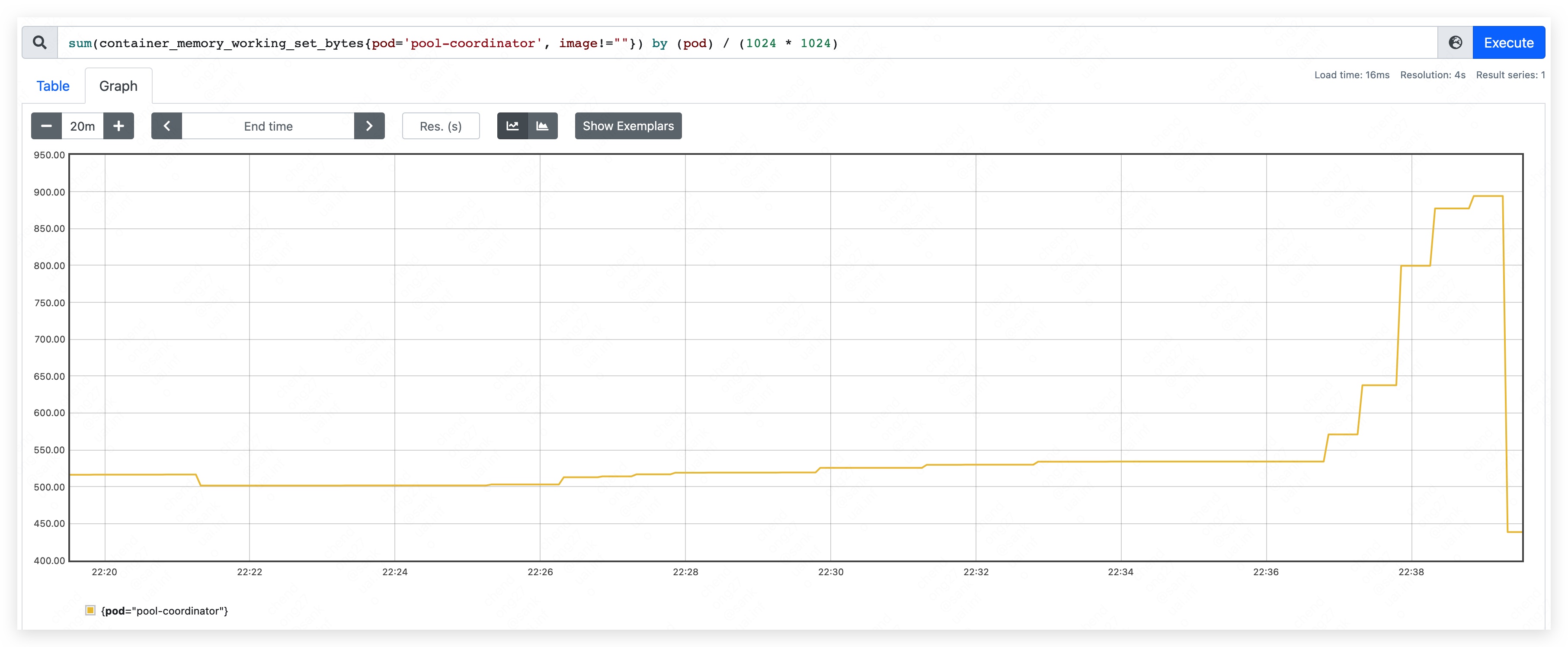
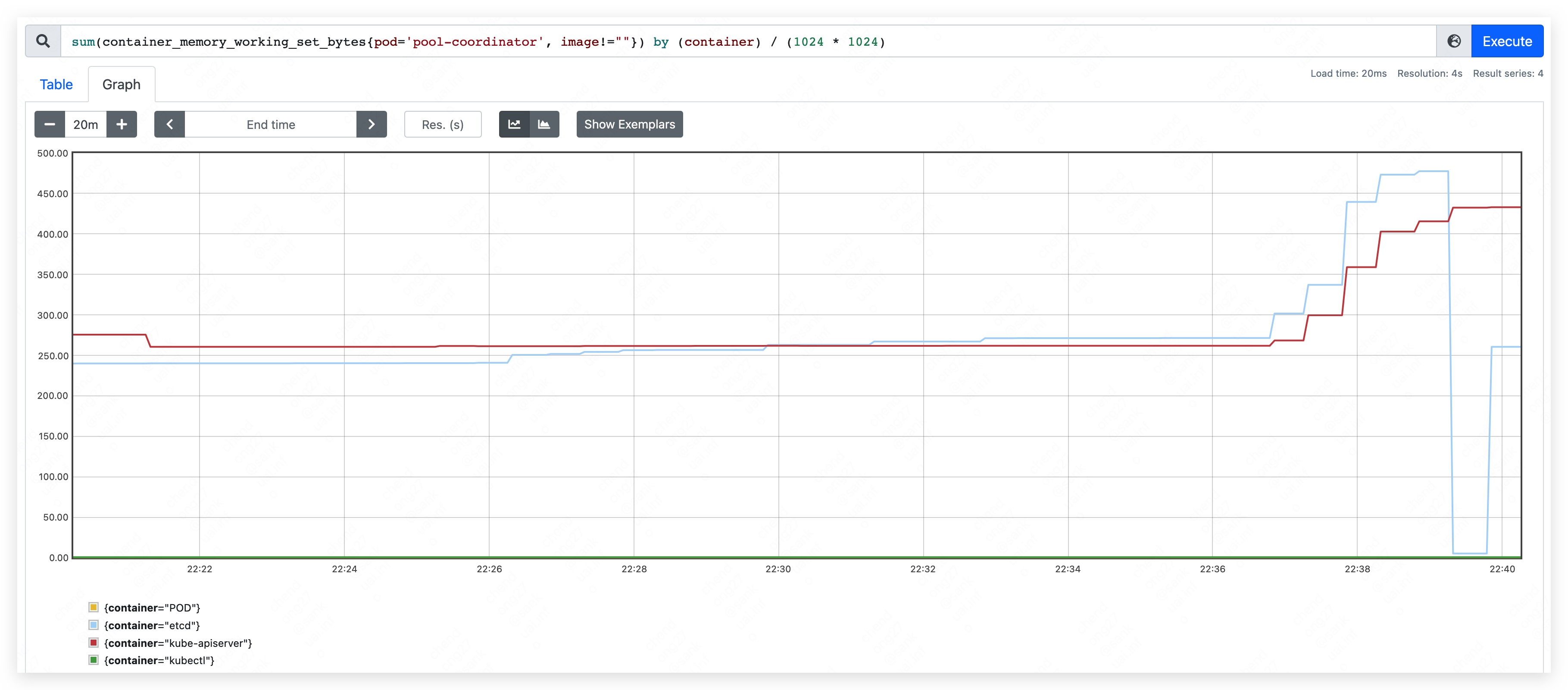
Phase five
Run other program to do leader election and check the result.
Go code run 500 goroutines and every goroutine do the same things to acquire leader. After acquiring leader successfully, go client sleep 1 second and quit.
We can see that program acquired leader successfully. After one client quited, the other go client can aquire leader successfully.
I1212 14:58:43.652733 41875 leaderelection.go:258] successfully acquired lease default/test-lock
I1212 14:58:43.652766 41875 main.go:656] new leader elected: ff43ffde-3551-47d6-b2af-1fa3ef115b86
I1212 14:58:43.652779 41875 main.go:562] Controller loop...
I1212 14:58:44.653060 41875 main.go:564] Controller quit.
I1212 14:58:44.662196 41875 main.go:648] leader lost: ff43ffde-3551-47d6-b2af-1fa3ef115b86
I1212 14:58:44.679782 41875 leaderelection.go:258] successfully acquired lease default/test-lock
I1212 14:58:44.679826 41875 main.go:656] new leader elected: 76870bb5-eaa0-44b0-a8a8-203c36a2d373
I1212 14:58:44.679915 41875 main.go:562] Controller loop...
I1212 14:58:45.680211 41875 main.go:564] Controller quit.
I1212 14:58:45.686105 41875 main.go:648] leader lost: 76870bb5-eaa0-44b0-a8a8-203c36a2d373
I1212 14:58:45.697108 41875 leaderelection.go:258] successfully acquired lease default/test-lock
I1212 14:58:45.697131 41875 main.go:656] new leader elected: b127e7bc-beeb-474a-b0e9-5023b1563d94
I1212 14:58:45.697210 41875 main.go:562] Controller loop...
I1212 14:58:46.698199 41875 main.go:564] Controller quit.
I1212 14:58:46.702313 41875 main.go:648] leader lost: b127e7bc-beeb-474a-b0e9-5023b1563d94
I1212 14:58:46.733931 41875 leaderelection.go:258] successfully acquired lease default/test-lock
I1212 14:58:46.733953 41875 main.go:656] new leader elected: 7a4dd5d7-5e25-4f69-a882-d32e17bb703a
I1212 14:58:46.734007 41875 main.go:562] Controller loop...
I1212 14:58:47.739147 41875 main.go:564] Controller quit.
I1212 14:58:47.743684 41875 main.go:648] leader lost: 7a4dd5d7-5e25-4f69-a882-d32e17bb703a
...
Check the lease resource in Yurt-Coordinator. We can see the lease resource and the holder of lease changes periodically.
$ kubectl get lease
NAME HOLDER AGE
test-lock ff43ffde-3551-47d6-b2af-1fa3ef115b86 5m
$ kubectl get lease
NAME HOLDER AGE
test-lock 76870bb5-eaa0-44b0-a8a8-203c36a2d373 5m
$ kubectl get lease
NAME HOLDER AGE
test-lock b127e7bc-beeb-474a-b0e9-5023b1563d94 5m
$ kubectl get lease
NAME HOLDER AGE
test-lock 7a4dd5d7-5e25-4f69-a882-d32e17bb703a 5m
Conclusion
After testing, we got the minimum resource limit that Yurt-Coordinator needed: CPU 310m、memory 450MB.
And we see that deleting resource in etcd will not let the resource used of Yurt-Coordinator goes down.
It is caused by the storage mechanism of etcd, which will add tombstone revision instead of deleting resource immediately.
When patching resource frequently, the memory used of etcd go up. If we set the memory limit of etcd, it will cause etcd container OOM.
Finally, we got that CPU is not the limit resource of Yurt-Coordinator. And the memory used of etcd container should be limited to an acceptable level to protect other pod in edge node pool
So, in an edge node pool, when node number less than 500 and pod number less then 1000, we recommend the resource configuration below:
apiserverResources:
requests:
cpu: 250m
---
etcdResources:
limits:
cpu: 200m
memory: 512Mi
requests:
cpu: 100m
memory: 256Mi